 0274 889 110
0274 889 110 (0800 RATMAN)
(0800 RATMAN) 16 Marshall Laing Avenue, Mount Roskill, Auckland 1041, New Zealand
16 Marshall Laing Avenue, Mount Roskill, Auckland 1041, New Zealand
 0274 889 110
0274 889 110 (0800 RATMAN)
(0800 RATMAN) 16 Marshall Laing Avenue, Mount Roskill, Auckland 1041, New Zealand
16 Marshall Laing Avenue, Mount Roskill, Auckland 1041, New Zealand
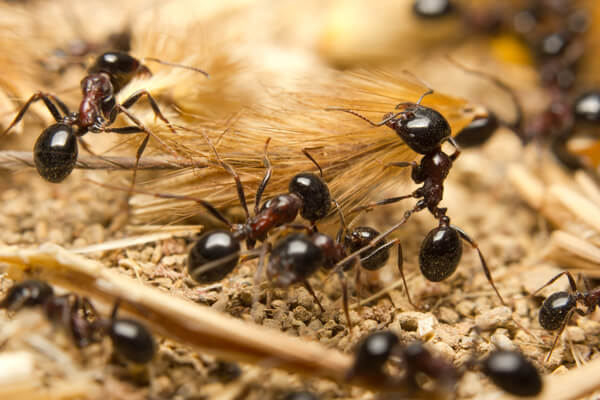
Terminator Pest Control acknowledges that Ant control can be easy to find a solution for, or extremely difficult to solve. Ants have multiple queens, and being social insects, dont always return to the same nest. My Grand Father always used to say, That Auckland is simply just a Giant Ant Colony. The ants you see around your section or home are termed Foraging ants, and those foraging ants represent between 2% to 10%, of any ant colony. A foraging line of ants can be extremely long, even coming from neighbouring properties. Nests can be found almost everywhere you look, ranging from small to huge colonies.
I believe the easiest to control are the sugar eating ants, and the idea is not to sray the ants you see, but to offer them either a liquid or gel based product they take back to the nest, thus killing off the entire colony. I have noted over 20 years, that my clients who carry out a Annual General Spray of their homes, very seldom have ant problems, or any other crawling or flying insect Issues.
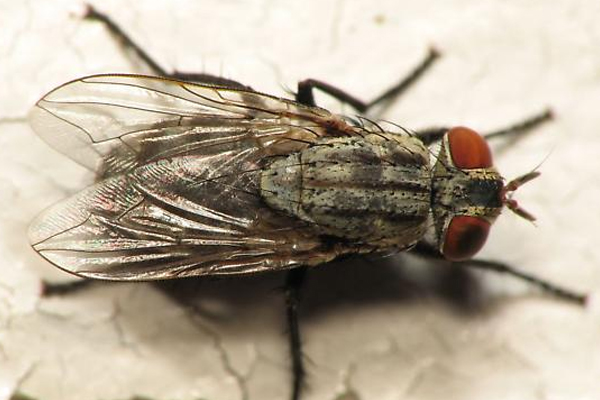
Terminator Pest Control recommends a Yearly Fly Treatment Service for both Residential homes and Commercial offices and Food processing businesses, Takeaways, Dairies and Superettes. Many of those Businesses also need a Pest Control Certificate, to meet Auckland Council Regulations for Food Premises. We do it all.
New Zealand is home to some 4000 species of flies, but worldwide, there are more than 122000 species, and worldwide, flies make up the 4th largest order of all insects.
Fly Control in New Zealand has a long season, usually starting in Spring, and lasting through to mid Autumn.
Flies spread disease by contaminating food, causing illness. They leave Fly dirt all over your ceilings, and annoy the hell out of you by continually landing on you on a hot day.
The benefit of a yearly spray to the customers home, is that it also keeps all other flying and crawling insects under control

Terminator Pest Control can also carry out Spider Control, both inside and outside of your home, depending on what you, as the customer require. With my vast experience, and great friendly communication skills, I can quickly determine the best course of action for you. I can offer effective control for the dreaded Whitetail Spider.
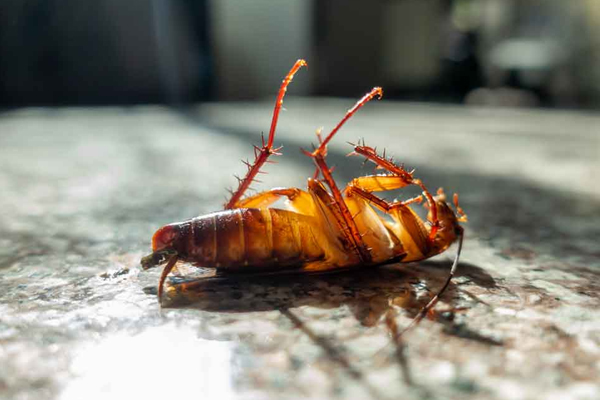
Terminator Pest Control can also take care of all your cockroach infestations. First step is to get a good clear close up photo of the cockroach, as cockroaches fall into two main types. Native bush cockroaches, and introduced varieties of pest cockroaches. This is very important to get the identification right, as this determines what course of treatment should be carried out. I achieve excellent results with my cockroach infestation treatments, as I learned years ago, not to be guided by what the customer wants to pay, but to carry out each job to the best of my ability, so if its results you want, I know I can help you.
Some Interesting Cockroach Facts:
Scientists have established, that cockroaches predate Dinosaurs, with fossil records dating them back some 300 million years ago.
Worldwide, there are some 4000 different species of cockroaches, with 30 known species just here in New Zealand, 15 of these are native cockroaches. Which generally speaking cause no problems, apart from freaking folk out.
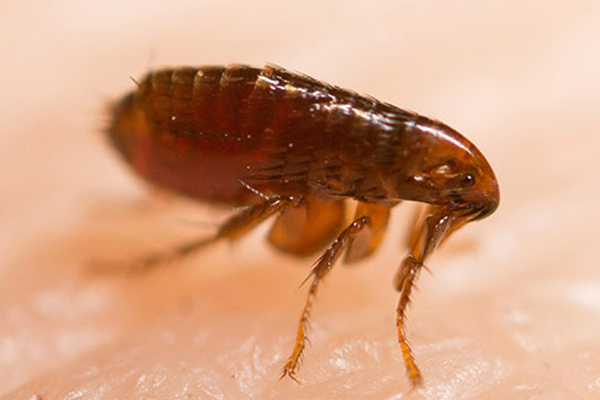
Terminator Pest Control, has excellent results treating fleas. First stage is to properly indentify, that the problem is actually fleas, and not bed bugs. That is where 20 years of experience, and good customer communication skills come in handy. Fleas can appear in wooden floors just as easy as carpeted floors. In order to give the best possible treatment, I always add IGR (Insect Growth Regulator), to help break the Fleas life cycle. It is my personal belief, that no flea treatment can kill the Flea egg, as it is covered by shell, and the same with the Larvae, which is a fully formed flea, but not yet hatched, inside a skin cocoon. Eggs and also the larvae have been known to lay dorminant inside empty homes, and after a year, suddenly hatch as a person enters the building. I never guarantee a flea job for the first 6 to 8 weeks, as living adult fleas die pretty much straight away, but eggs turn to larvae, and larvae hatch during that period, they bite ferociously, and as humans are not hairy, they jump back onto the floor, and die on the sprayed surfaces.
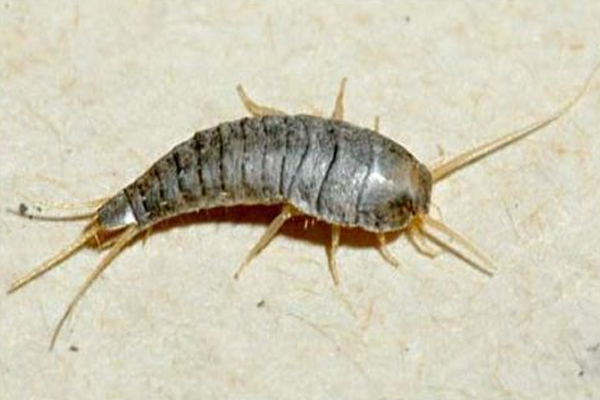
Terminator Pest Control can also treat Silverfish outbreaks in your home, however silverfish infestations are fairly uncommon. Silver fish are an unusual insect silver grey in colour and between 12mm. to 25mm. in length. They are flat, and easily able to slip into small gaps and cracks, and are also wingless. They are sensitive to moist damp places, and need 75% humidity to survive. They can survive short periods in lower Humidity. They love warm dark places, with temperatures ranging from 70 to 90 degrees, and while doing rodent jobs in ceilings, I often find them in insulation above built in wardrobes. Silverfish feed on carbohydrates, like pasta, cereals, flour, oats, so keeping that range of food in air tight containers, will certainly help. Silverfish also eat protein such as pet food, and dead insects, but also will eat paper, glue in book bindings, and starch. Other steps the homeowner can take would be using dehumidifiers around damp warm areas.
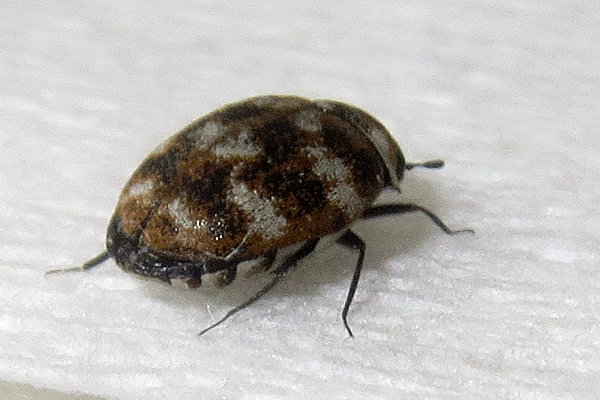
Terminator Pest Control can professionally handle your Carpet Beetle issues. New Zealand has several different types of carpet beetle, and it is the larvae or grub which does the damage. Adult carpet beetles simply fly into your home from flowers in your gardens etc. and lay their eggs close to skirting boards, and often underneath furniture so you dont see the damage happening until its too late. They only damage woollen carpets, and anything made from natural fibres, also woollen clothing. The grub burrows down into the carpet and chews on the fibres under the carpet, which then leaves bald areas of the carpet, after vacuuming. If you have woollen carpets, I recommend an annual spray just of the carpeted areas, with beds and furniture pulled away from the skirting boards. I also recommend that if you are replacing an old carpet with a new woollen one, to get me to spray all the flooring before the new carpet is Laid.
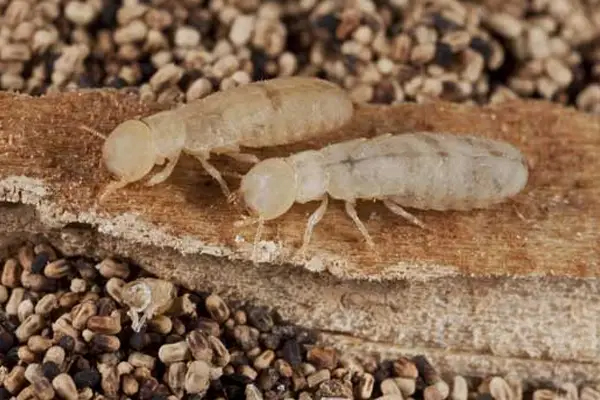
Terminator Pest Control Recommends that your Borer Treatment is carried out every 10 years. We are equipped to carry out Borer control efficiently, but there are many aspects of borer control to understand however. Over the years, I have had many folk ring me saying they see borer in skirting boards, doors and frames, and other locations inside the home. So the first thing to understand is that, to treat borer that the timber has to be raw. Unpainted, unstained or varnished, for any treatment to be effective, the chemical must soak deep into the timber. That just leaves the ceiling voids, and under floor areas which can be treated. Most houses built before 1960, would be untreated and rough sawn timber, making them vulnerable to borer. Boric treatment of timber started around 1952. New Zealand has two types of borer, the common borer, which has the smallest entry exit hole around 1mm. This borer has a flight season between October through to about May, and during this period, the female lays her eggs on untreated rough sawn timber and dies. The eggs turn to Larvae, and the grub burrows into the timber, tunnelling through the timber for 3 years, and during this time, sawdust will fall from the entry hole, which indicates a live borer situation.
The second type of borer is much more serious, and called the Two Tooth Borer. this one has a much larger exit hole, about 5 mm., and stays inside the timber for 11 years, and during that time can hollow out a 4×2, to the extent that it collaspses, causing serious structual issues to the building.
The Goverments Healthy Homes Standards, have created problems for Pest Controllers, by covering the timber you would normally walk on and spray with the roof rafters, and the underfloor timber as well, which means if you require a proper treatment carried out, all this insulation has to be lifted and replaced so more expense for the owner. There is much more to discuss, which I will cover at estimate stage on the phone.
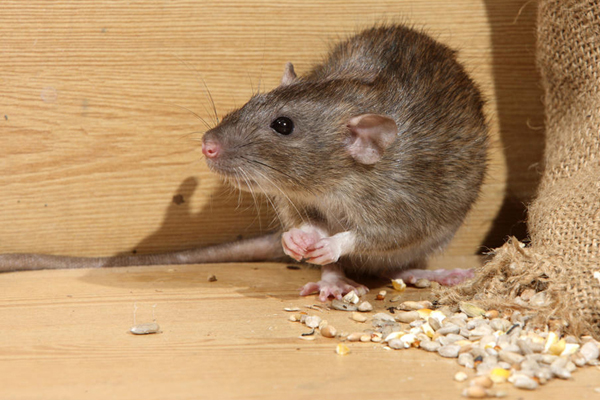
Terminator Pest Control has vast experience in all aspects of rodent control as my Specialised Phone Number would suggest 0800 RATMAN (0800-728626)
The 3 main rat species we deal with in New Zealand are all introduced.
Prices for rodent control vary greatly, depending on what your individual requirements are, and the cost of the consumables used on your job, also whether the job is ongoing, or just a basic one off job. Distance to travel is also a factor. Even architecture of the home, will have an impact on price as some homes have no crawl space in the ceilings, and some have no manholes. So lets have that friendly phone chat first, and I will try to work out the best solution tailored to your needs.
Rat Facts:
As long as a rat colony has abundant food, they will breed at an alarming rate. A Norway rat can live between 1 and 3 years, but the life expectancy of a dense population of rats, where there is great competition for food, is only a little over a year.
Rats reach sexual maturity in just 4 to 5 weeks, and the female will birth litters between 5 to 12 rat pups, and raises about 6 litters each year. Just 2 rats left unchecked have the potential to swell from 2 to 1250 in just a year.
Heres the frightening bit, just before 911 a guy spent a year researching a large rat colony in New York, and learned that a singe male rat had up to 35 partners in just 1 night,…Do the maths on that.
Rats can climb vertical walls of houses and easily jump 4 to 6 feet, but often climb trees that overhang the house roof, and gain entry to the ceiling void. Rats need about 2 ounces of water a day, and this usually comes from the homes roof spouting.
A New Zealand Landcare Researcher, claims that rats kill aproximately 47000 birds every night in NZ.
Ship and Norway rats and kiore have a major impact in New Zealand because they are omnivores – eating birds, seeds, snails, lizards, fruit, weta, eggs, chicks, larvae and flowers. The varied diet of rats also makes them competitors with native wildlife for food sources.
Rats can make you sick:
It is possible for rats to transmit diseases to people. They can transmit diseases if they bite or scratch people and also by leaving their droppings and urine around the home. People can also get sick when rats contaminate their food or run across countertops where food is later prepared. Some of the most common diseases transmitted to people by rats include:
Leptospirosis is a blood infection that can be transmitted from rat urine to humans. Signs and symptoms can range from none to mild (headaches, muscle pains, and fevers) to severe (bleeding in the lungs or meningitis).
Salmonellosis – if you consume food or water that has been contaminated by rat faeces you can get diarrhoea, fever and abdominal cramps.
Dysentery – a gastrointestinal disorder that causes abdominal pain and cramps.
Lymphocytic choriomeningitis (LCMV) – a viral infectious disease that is transmitted through the urine and saliva of rats, causing fever, malaise, lack of appetite, muscle aches, headache, nausea and vomiting.
Mycoplasma – a type of bacteria known to cause respiratory problems and pneumonia.
Rats Often Cause Expensive Property Damage:
Rats can be destructive to property as they gnaw on plastic and wood, leaving holes in walls, floorboards, electric cables, and are known to sometimes cause house fires, and flooding from gnawing on plumbing water pipes. Vertical teeth marks are often seen in objects that rats have chewed on. Rats often nest beneath building foundations, in woodpiles, in dense vegetation, and inside walls, ceilings, and cabinets. They can enter homes through a 20mm sized hole or crack in the foundation or walls. Winter is when rats are most likely to try and come inside when natural food supplies are at their lowest and the weather is cold and often wet.
Mice Control & Facts:
Terminator Pest Control has over 20 years of specialist experience in rat & mouse Control, so we can solve your problems quickly and efficiently.
Female mice reach sexual maturity at about 6 weeks, and male mice at about 8 weeks. The female has between 5 to 8 litters each year. With a gestation period of about 19 to 21 days. The female gives birth to a litter of between 3 to 14 mouse pups, but averages out about 8 per litter. So from just one breeding pair, it is possible for the female to give birth to 8 litters of 14 mouse pups, a total of 112 mice, in just one year.
Mice, much like other rodents, have a set of incisor teeth that never stop growing. Their teeth grow at a rate of 0.3mm a day. Because of this, mice have to constantly gnaw on items which range anywhere from cardboard boxes to wires and furniture in order to grind their teeth down to a reasonable length. Mice hear, and communicate with ultrasound, so not only do they have superhuman hearing, but they can also jump to incredible heights. Mice are known to be able to jump vertically up to 25.5cm, which when considering their average size to be 3 to 10cm, thats impressive.
Eyesight of mice is very poor, but smell and hearing are very good.
Diseases Rodents Carry. ( mostly from urine)
Hantavirus, Bartonellosis, Salmonellosis, Leptospirosis, Weils Disease, Rat bite fever, (Streptobacillus & Spirillum), Tularemia, Rickettsial, Murine Typhus, Toxoplasmosis, Lymphocytic Choriomeningitis, Bubonic Plague, Septicemic Plague, Pneumonic Plague.
Allergens & Asthma
Aside from the diseases listed above, an infestation of mice or rats also means the introduction of allergens. A protein found within their urine may trigger asthma and closely related allergic conditions in susceptible people. The residue from rodent urine can easily spread all over a home, with the highest concentrations usually in kitchens & pantries, which can lead to asthma attacks. Mice typically urinate in micro-droplets wherever they are nesting. And since they eat and travel throughout the day, mouse urine can literally be found on thousands of surfaces throughout a home.
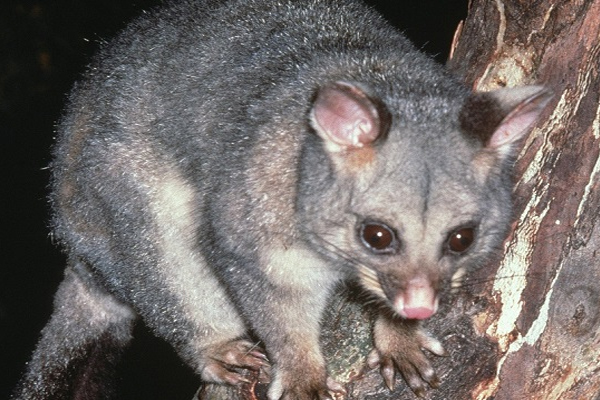
Terminator Pest Control, is equipped to carry out possum control in urban areas of Auckland, and the methods we use, are baiting and kill traps.DOC, estimate that possums eat around 20 tonnes of foliage every night in New Zealand. Damage to native bush is cause for serious alarm. There is also a serious risk of disease to Dairy and Deer Farmers livestock, from possums carrying Bovine Tuberculosis. The value of economic loss, and for damage and control of possums is in the tens of millions.
The possum is one of New Zealands greatest threats to our natural environment.
The common brushtail possum, Trichosurus vulpecula, was first introduced to New Zealand from Australia in 1837 to establish a fur trade. This release was unsuccessful and a second release 20 years later at the same Southland location was required for them to establish.
The possum has a thick, bushy tail, thick body fur, a pointed snout and large, pointed ears. There are two colour forms of the species – grey and black, with many variations in appearance. Possums can walk, jump and bound and its prehensile tail helps it move around tree branches.
The size and weight of possums varies across New Zealand. Typically, adult possums are 65 to 95 cm long and weigh 1.5 to 5 kg.Possums are nocturnal and can live anywhere where there is shelter and a varied food supply. They are now widespread across most of New Zealand. The main habitat is forest, However, Urban Auckland, has many large trees, and possums are evident in large numbers.
The Threat
Possums have a significant impact on many of New Zealand’s natural ecosystems. They occur in high numbers and their own predators, such as feral cats, are no match for a possum.
Leaves form the main part of their diet, but possums are opportunistic omnivores. They eat buds, flowers, fruit/berries and nectar, which means they compete with native birds and reptiles for food sources that are available. The growth and life-cycle of trees or plants are significantly affected when possums forage on them. Possums live in hollows in tree trunks and are nocturnal. Their mating call late at night and in the wee smalls of morning terrify some people. This action is called vocalising.
In the early 1990s, possums were filmed eating the eggs and chicks of kōkako and this evidence changed many people’s views of their threat to wildlife. They eat invertebrates, including weta, and are significant predators of New Zealand land snails. Researchers using nest-cameras have witnessed possums & ferrets & stoats inside defenseless kea nests, eating the inhabitants.
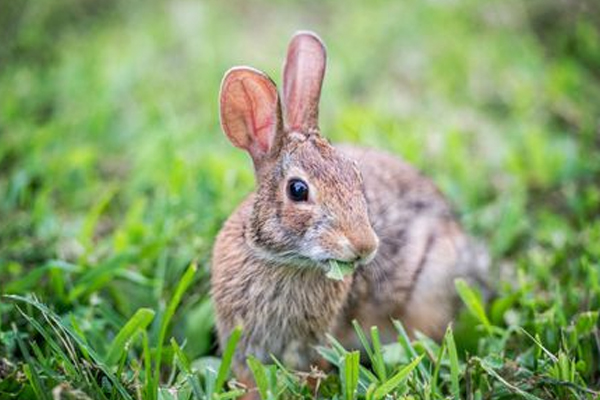
Terminator Pest Control also carries out Rabbit & Hare Control, usually in the rural areas of South Auckland, where lots of large Housing Sub Divisions are springing up. Rabbits traditionally live in burrows in the ground, and bulldozers are currently making them homeless. The method I recommend is baiting, using specialized bait feeders. Shooting is not an option as it is labour intensive, and generally rabbits breed faster than pin point shooting. Also an abundance of Housing Projects, makes shooting too risky.
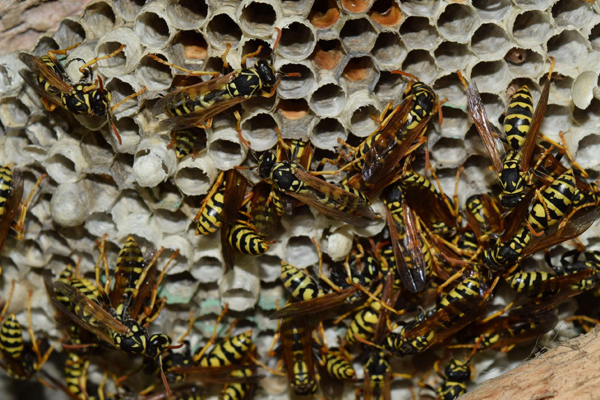
Terminator Pest Control. Specialises, in all types of Wasp Nest iradication. The 3 main species of wasps we deal with in New Zealand are, Common Wasp. At first appearance, these wasps look black with yellow stripes on their abdomen.
Sometimes very hard to tell apart from Common wasps as both types are very fast and active, and both can be very aggressive. German Wasp has more of a yellow main colour, and when viewed closely, the black stripes are actually a black dot in the centre, with a black triangle on both sides of the dot, and since you have got this close, you are about to be stung. If you have a serious sting allergy, you need to carry an EpiPen as wasp sting can be fatal.
These wasps become a nuisance as Summer is winding down. All untreated nests have now grown to about grapefruit size, and have hundreds of very aggressives wasp sunbathing and tending the nest. Their nests are totally different to Common & German wasps and always above ground. The nests are much smaller and commonly found on tree branches & fences, under the eaves of houses, and under the edges of roofing mostly down at spouting height, and in internal roof gullies. Their shape is different as well. Thin long bodies, and when in flight, first thing you notice is long dangling back legs.
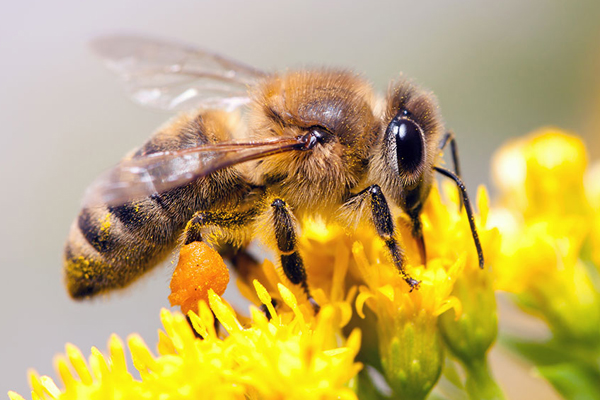
Terminator Pest Control has been called to many Bumble Bee Jobs over the years and unfortunately the subject of Bumble Bees can be very emotional to some folk. Some see them as simply bees doing good work, some dont realise they sting, and believe you me, they really hurt. others want me to take them away for free and relocate them. So I will now start with some facts about Bumble Bees. They have zero attraction for a bee keeper, as they produce nothing of value. They do produce small quanities of a type of Honey, which is not edible, and looks like road tar. A honey bee Queen has a value to bee keepers of around $60.00, a bumble bee queen has no value at all, and in fact Green House Keepers are the only ones I know who actually want the odd colony for propagation work in their glasshouses. Last I heard, they only paid $25.00 for a hive delivered to them. My advise is, if you have a hive on your section, and it causes no trouble, leave it alone, as Bumble Bees are great propagators in your garden, if you get stung then its time to do something. I have had Commercial jobs where container drivers have refused to transport containers in or out of certain locations as the drivers have been stung. With the vast work experience I have I can quickly find a solution for your requirments by phone.

Terminator Pest Control, is an Old School Business, currently run by the Owner/Technician with 20 years of experience in Pest Control, who takes great pride in his workmanship, and will give you the best possible no fuss, honest service. The Owner also believes in giving sound advise, and great Communications, which is essential to run an efficient business. I cover every aspect of Pest Control, and operate Auckland wide, and outside Auckland by arrangement.

Terminator Pest Control, is always on the look out for new Commercial business, and more often than not, I can provide a superior Treatment and generally at a cheaper price than the Big Pest Control Ventures. I run my business differently than most Pest Control Companies. I dont sign you up to a Binding Yearly Contract, which often comes with eye popping charges. Instead you pay for, and fully own all the consumables used in your job, such as bait stations etc. and from there, charge a service fee for additional ongoing work, plus any additional consumables used during your service visit. There are no hidden costs. You have nothing to lose, and likely everything to gain.
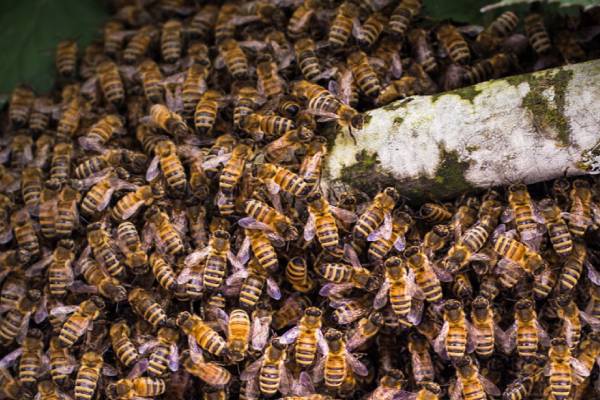
Terminator Pest Control is also a Hobbyist Registered Bee Keeper, A9033. *But Please Note*. This Swarm Collection is not a Free Service. I am a Beekeeper, as my Grand Father before me was also. It is my Interest and my Hobby, and not a money making venture, in fact it is the dead opposite of that. Each swarm I collect goes into a hive at my Apiary, at a cost of about $150.00 per hive, there are registration fees per hive, pollens, supplements, equipment, the list is long. The bees have to be treated for disease, as soon as the swarm is collected.
Truth is, the world needs Bees, and many Bee Keepers look upon their Hobby as doing Gods work on earth.
Now every so often a swarm may arrive at your home or section, and you either do not see it, or you hope it will go of it’s own accord. Sometimes it does but other times it may set up a hive inside your wall, or under your roof, I have even seen wild hives in compost bins. So now as the homeowner you have 2 choices. Do something about it, or don’t. Now this is where I come in very useful. I have a foot in both camps, Pest Control with 20 years experience, and I’m a Bee Keeper. I know what can be saved, and what cant be saved. That decision is usually a financial one, cost of saving as opposed to destroying the hive. What most folk do not realise is that a bee hive or a wasp nest growing insaide your wall produce moisture and lots of it. Eventually the nest grows to the size that it now touches your inside gib board wall lining and they are like blotting paper sucking that moisture up and then the gib collaspes leaving a dinner plate size hole in your wall lining.
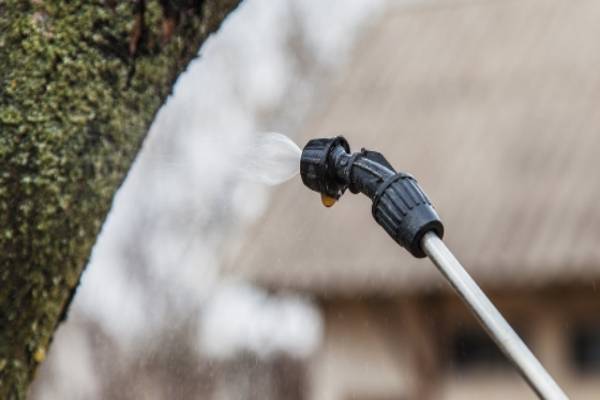
Terminator Pest Control, strongly recommends all clients to commit to a yearly spray program. The main pest nuisance problem we all face in New Zealand is flies, not only are they annoying, but they also leave unsightly fly dirt on your ceilings, and contaminate you household food. They bring disease and virus into your home, so starting around September, its time to book your treatment. A Yearly full mist spray of the interior, and full knapsack spray of the exterior walls, will not only keep the flies under control, but also the myriad of other flying and crawling pest insects.